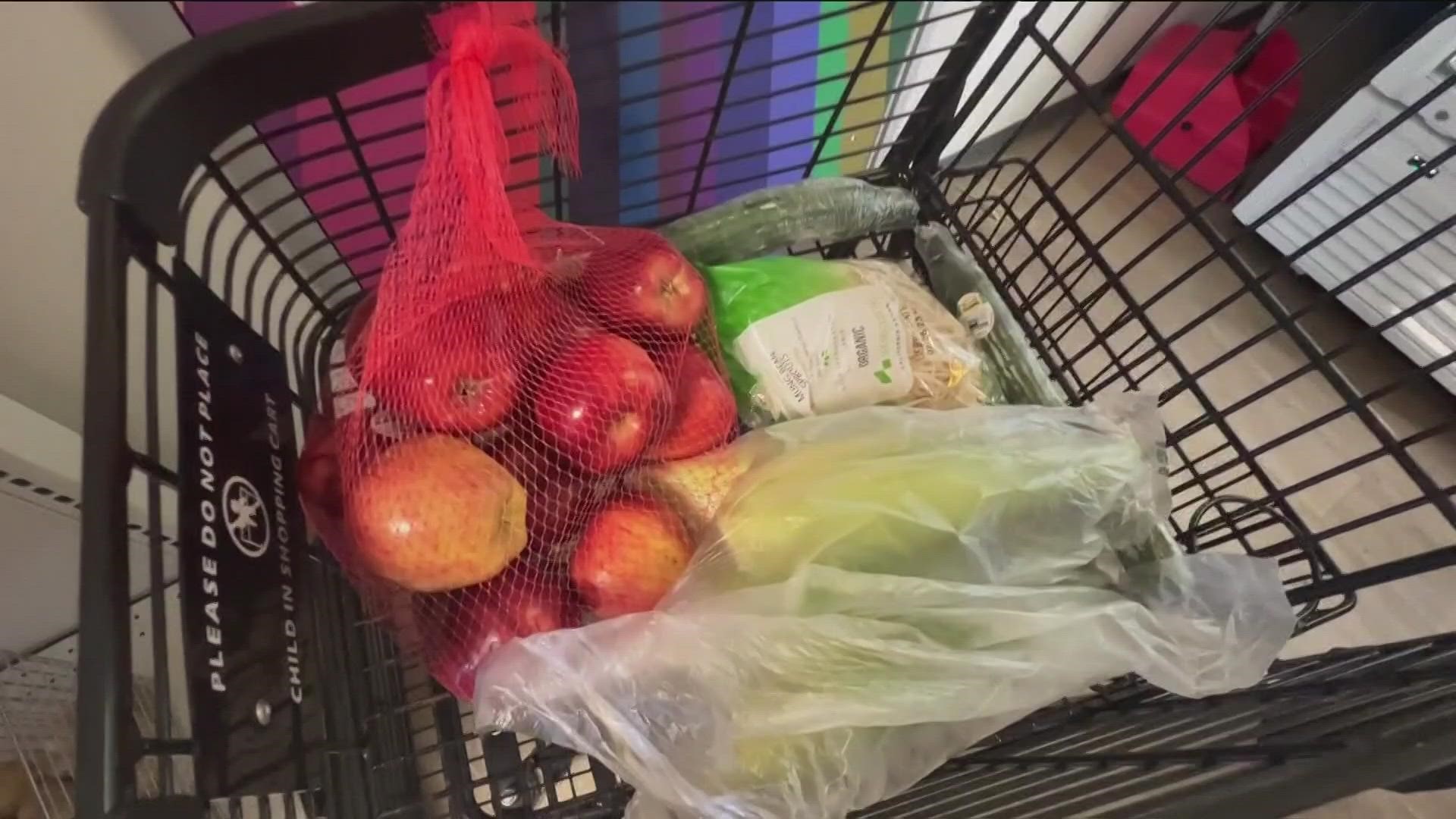CALIFORNIA, USA — Those emergency allotments from the federal government to the California's CalFresh program end Tuesday meaning families will see the last boost to their benefits on March 26..
As the federal COVID emergency declaration comes to an end, the additional federal assistance in food stamps that more than 350,000 San Diegans now rely on will also come to an end.
The CalFresh Emergency Allotment was a temporary increase to regular CalFresh benefit amounts. Through the CalFresh Emergency Allotment, households received the maximum benefit for their household size, and for households that were already receiving the maximum benefit, they were guaranteed at least an additional $95 in Emergency Allotment benefits.
As one local non-profit put it, it's like "falling off a food cliff."
"We are expecting that more families here in San Diego are going to need our assistance," said Vanessa Ruiz of the San Diego Food Bank.
She said they are preparing now as food stamp benefits, also known as CalFresh, will soon be drastically reduced by at least $95 a month depending on family size and income.
"It is going to range, but the minimum is going to be $95 but it could be a couple hundred, three hundred dollars for some families," Ruiz told CBS 8.
Regular benefits depend on a household’s unique circumstances, including household size, income, and deductions. Some households’ benefits will be reduced by as much as $258, from an emergency allotment of $281 per month to a regular allotment of $23 per month. Many of those facing reduced benefits will be seniors living at or near the poverty level.
"People are paying record prices for their food, gas, electricity, rent," Ruiz added, "And this could not come at a worse time."
San Diegan, Forrest Boozer, and his family received benefits from CalFresh, also known as food stamps, so that he can have enough food for his son and other family members.
"I think it's too early to cut the emergency allotments. Everybody has been benefiting from it. It seems premature to do that this early," said Boozer.
"Everyone stands to lose, no matter where you fall on the Cal Fresh benefits range," said Carissa Casares of Feeding San Diego. The group is also gearing up for an increased demand for services, including no-cost food distributions, as these bolstered benefits disappear.
Feeding San Diego also provides outreach to families, in English and Spanish, to sign up for CalFresh benefits, or simply to get more information.
"Our specialists, people can reach out to them even if they aren't applying, even if they just have questions about the emergency allotments," she added.
The San Diego Food Bank is also ramping up for an uncertain future, much the same way they did during the start of the pandemic.
"We are... preparing for a potential increase, and we are doing that by making sure we have the right types of food in-house," Ruiz said, "and we are letting our donors know, so that they know in advance and so they can help support the San Diego Food Bank as well."
The Food Bank has food assistance programs operating throughout San Diego County. Those in need of food assistance are encouraged to use the Food Bank’s online Food Locator Map: www.SanDiegoFoodBank.org/GetHelp For additional resources, call 2-1-1, the county’s social services resource hotline.
For now, Boozer is grateful he can grab a few groceries at Feeding San Diego for his family in times of need.
"Thank you for shedding light on this," said Boozer.
Feeding San Diego is always looking for more volunteers, monetary and food donations. You can find more information on how you can help by clicking here.
WATCH RELATED: Food assistance benefits for millions of Californians will soon be slashed

